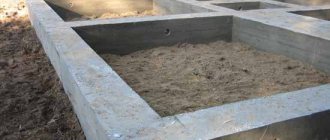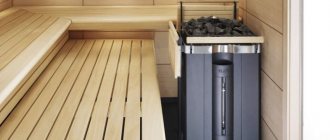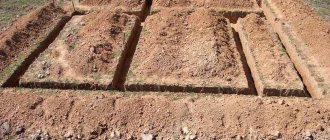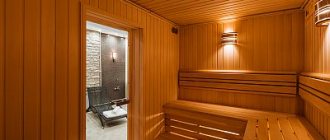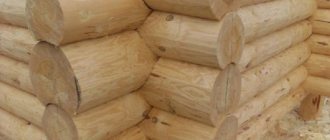- Conditions for normal traction
- Decorative
A classic method of heating rooms, which has been used since ancient times. In this article we will look at the standard dimensions and drawings of a fireplace stove for a room in a private house. We hope that this information will help you avoid design errors and save time and nerves.
We carry out calculations
The main thing is to make a detailed drawing before starting work. The choice of product scale will depend on the area of the room. It is necessary to strictly adhere to the recommended standards when drawing up a project in order to obtain a high-quality result.
Fire hole
The first step is to determine the dimensions of the firebox. To accurately calculate them, you should measure the area of the room. The proportion of the hole in relation to the room is recommended 1 to 50. Consider a specific example:
- The area of housing where the fireplace will be installed is 40 sq.m.
- We divide this parameter by 50 (40/50 = 0.8 sq.m.).
- The result obtained is 0.8 sq.m or 8000 sq.cm - the required hole area.
This needs to be recorded in the drawing. We will tell you how to determine the aspect ratio below.
Firebox width and height
The proportion by which experts determine the length of the sides is 2 to 3. In our case, it turns out 73 * 109.5 cm. If you want to check the correctness of the calculations, simply multiply 73 and 109.5, the result will be 7993.5 (almost 8000 sq. cm ). This indicator practically coincides with the requirements.
Depth
Correctly chosen, it significantly affects traction, so you cannot make a mistake with this parameter. Inaccuracy may result in smoke and poor heating. Calculating the required value is very simple - it is in proportion to ⅔ to the height. This means: (73/3)*2 = slightly less than 49 cm. If this parameter is exceeded in the finished product, then the heat will simply go into the chimney pipe. If, on the contrary, then smoke will inevitably appear in the room.
Fireplaces: height, width, depth (table to simplify the procedure):
| Room (sq.m) | Portal (mm) | Firebox (mm) | Chimney cross-section (mm*mm) | ||||
| Square | cubic capacity | Width | Height | Depth | Neck | Rear width | |
| 12 | 42 | 500 | 450 | 300 | 120 | 300 | 140*140 |
| 16 | 50 | 600 | 500-520 | 320 | 120 | 400 | 140*270 |
| 22 | 60 | 700 | 560-580 | 350 | 120 | 450 | 140*270 |
| 30 | 80 | 800 | 600-650 | 370-380 | 130 | 500 | 270*270 |
| 35 | 100 | 900 | 700 | 400-420 | 130 | 600 | 270*270 |
| 40 | 120 | 1000 | 750 | 450 | 140 | 700 | 270*270 |
Some tips
The number of bookmarks depends on the quality of the firewood - wood species and humidity.
For example, when I drown an apple tree, three bookmarks are enough. If I drown with birch, then I need three bookmarks, plus a bookmark for burning off soot.
In total, one firebox requires 30–35 kg of dry firewood (for one stack 7–10 kg).
If we prepare a sauna in the summer, then after finishing the fire the coals can be taken out immediately. After purging the heater, the stove is ready.
If this happens in winter, then at the end of the fire the stove must “stand”. This means that the outer walls of the furnace must be heated by the internal mass and warm the bathhouse premises to an acceptable temperature (20 - 25 °C). This can last 4 – 5 hours.
To reduce the “lining up” time, as well as to operate the stove in a gentle mode, I recommend heating the stove in winter on the eve of the bath day.
Special attention
Above you will find information about the required cross-section of the chimney - it should be approximately 15 times smaller than the portal. Please note that this is a very important step and a design mistake can be costly. The occurrence of reverse draft can lead to carbon monoxide poisoning. We strongly recommend consulting with specialists regarding the selection of a chimney. This can be done from representatives of one of the largest manufacturers in Russia - the Ferrum company. Qualified employees will be happy to help you choose the optimal equipment for removing combustion products.
Conditions for normal traction
Draft is the speed of air passing through the chimney cross-section. There is a normal level, which is 0.25 m/s, as well as an insufficient or excessive indicator. It is impossible to measure it accurately at home, but you can rely on indirect signs of determination, for example, the burning of a sheet of paper.
Factors influencing the value:
- Atmosphere pressure.
- Presence of precipitation.
- Wind speed outside.
- Pipe integrity.
- The correct dimensions of the fireplace.
We wrote above how to solve the issue with the last point. It is also important to study the dependence of the thrust level on changing conditions.
Material
We have analyzed only the ratio of the internal sides of the fuel compartment of the structure, but there are also external dimensions that directly depend on the choice of manufacturing method. The most suitable method is brick or stone, but they can be laid in different ways, taking into account the necessary indicators of the firebox. We will look at how many materials are needed for a specific project below.
Selecting a location
Location definitions are an important point. In this case, the requirements of specialists should be observed:
- There is no need to place the fireplace near doors and windows. This may interfere with its normal functioning. It is worth choosing a wall where there are no window or door openings, but if there is a window opposite, then this is good.
- Be sure to consider the possible outlet location for the pipe so as not to disrupt communications.
- Follow fire safety rules.
These tips will help you avoid big troubles in the future. To ensure that the size of the fireplace portal does not become an unpleasant surprise for you after installation, entrust the calculations to professionals.
Foundation
If you have a lightweight version (up to 700 kg), then you can skip this point. However, most products have a much higher final weight, where a platform device is simply necessary. Much depends on the specific project, we give average figures for the required depth - 75-100 cm. If the room is not planned to be heated all year round (to live in it permanently), then it is necessary to take into account the level of soil freezing and set the depth in accordance with it. The fireplace and main foundation of the house should not be combined into a single system, because they can have different degrees of shrinkage.
Basic mistakes
If you rush, you may end up with a non-functional product, which in certain cases may pose a threat to others. The errors are as follows:
- Failure to comply with the required parameters during construction (size, fireplace depth, etc.)
- Mistakes when choosing a location.
- Violation of fire safety regulations.
- Lack of foundation.
- Low quality materials.
A drawing taking into account all the requirements will help avoid most mistakes during work. The main thing is to be responsible for all technical standards and regulations, as well as to choose worthy products to create a high-quality result.
Knowledge is power
This information will be useful to you, even if you do not plan to build a fireplace in a private house yourself, but decide to hire a team of workers. The services of experienced and qualified specialists in this field are very expensive, so the choice of most people falls on general workers with a general profile. The difficulty here is that it is impossible to distinguish a good result from a non-working pile of stones by appearance. You will learn this only after the first days of operation, when it will be difficult to fix anything. With this knowledge, you will be able to correctly place control points at all stages of work.
Dimensions of a brick fireplace - standard for calculating the required amount of materials
We will not describe in detail the counting system for a specific case, because each project is individual. We present a standard diagram with which you can easily determine the quantity.
The system provided by professionals is as follows:
- Determine the thickness of the seams (it is important to strictly adhere to this indicator when working).
- Transfer the design of the future product from the drawing to the order.
- This is enough to calculate the required bricks (we recommend adding 10% of the resulting figure at the purchase stage).
If the base is made of the same material, then do not forget to include it in the calculation.
Put it together
The most important stage of preparation. When you receive a finished project for a future product, it will become clear that all the key parameters and their compliance are extremely important, and the appearance may fade into the background.
Basic fixed sizes
We are not saying that everything should be brought to a single standard. Deviation and creativity are allowed in parameters that do not affect the functional purpose of the structure (the height of the fireplace from the floor, the distance to the nearest wall, etc.). But all key elements must be done in accordance with regulated standards. Everything depends on the area of the room that will be heated, and all variables change in a certain dependence on this indicator.
Important dimensions:
- width, height and depth of the combustion opening, as well as its rear part;
- the distance between the chimney tooth and the smoke channel.
To make it easier to select sizes, you can use a convenient table.
| Dimensions in cm | Area of the heated room in sq.m | ||||||
| 12 | 15 | 20 | 25 | 30 | 40 | ||
| Fireplace window | Width | 50 | 60 | 70 | 80 | 90 | 100 |
| Height | 42 | 49 | 56 | 63 | 70 | 77 | |
| Firebox and its rear part | Depth | 30 | 32 | 35 | 38 | 40 | 42 |
| Height | 36 | 36 | 36 | 36 | 36 | 36 | |
| Width | 30 | 40 | 45 | 50 | 60 | 70 | |
| Distance from chimney tooth to smoke duct | 57 | 60 | 63 | 66 | 70 | 80 | |
Varieties
After solving all the technical nuances, we will move on to the most enjoyable part of construction - the choice of decorative design. There are few things that can create an atmosphere of comfort and warmth in a home as effectively as wood-burning fireplaces, the dimensions of which we have learned to calculate. There are many alternative offers on the modern market, which have their pros and cons. We will try to introduce you to all the most popular types.
Decorative
If it is important to add zest to the interior without extra costs, a false fireplace will be the best solution.
Built-in
This variety has been especially popular lately. Among the advantages, it is worth noting the saving of usable space, relative lightness and aesthetic appearance. However, when installing in a house with a finished renovation, difficulties may arise with the installation of the chimney.
Electric fireplace
A chic option for an apartment where a classic system with a conventional firebox is not suitable. Installation of the equipment is very simple, and the technology allows you to almost completely recreate the effect of a real flame.
Classical
This is a standard, time-tested fireplace insert, the dimensions of which we determined above. The real effect of a grandiose and status atmosphere will be created only with such a performance. We have considered all the difficulties that may arise at the design stage. Apart from complex and expensive installation, the classic has virtually no drawbacks. Small difficulties are more than compensated by appearance.
Suspension
A real open fire in a modern stylistic solution. Perfect for lovers of exclusivity and non-standard design finds. In addition to the task of decorating the room, this option can also perform the practical function of heating the home. The disadvantages are few, but they are significant:
- High price.
- Difficult to install.
Big
Classic design for large houses under construction. Installation in confined spaces is not recommended.
Average
3*5 bricks at the base - the optimal ratio of size and functionality.
Small
Does not require a foundation, and weighs only up to 100 kg. Installation is possible on the second floor, and in conditions of lack of space.
Bilateral
For effective heating, unusual products with a firebox on two sides can be installed. When located between two rooms, you can easily heat several rooms at once. In the center of a large area, this design will become a real decoration.
Rumfoord
Count Rumfoord created one of the most common and effective models and named the invention in his honor. Strict adherence to regulations and standards allows us to achieve a very high level of efficiency.
Three-tier
A functional and powerful device that can retain heat for many hours after the flame goes out. Each part has its own purpose, and together they create a grandiose and impressive composition. The only limitation is the size of the room and ceilings, which require large sizes.
Dimplex
This brand of electric fireplaces has the highest level of open flame imitation. The effect is created by a steam generator, the steam from which is illuminated by halogen lamps. Almost real flame without the risk of fire.
Cassette
The metal structure of the firebox is covered with glass. Ease of operation and fire safety are the main advantages of this type.
B-B-Q
Two in one. This unit is indispensable for receiving guests at the dacha or in a country house. If you want to impress everyone with a delicious meal cooked on an impressive barbecue fireplace, then be prepared to spend a lot of money to build it.
Metal
You can install it in a completed renovation, and its appearance will allow it to become a central object in the interior. Reliable, simple, stylish and more. Powerful versions can effectively heat even large open spaces.
Furnace appliances
Furnace appliances - doors, water tanks, grates, dampers, views and valves - are made mainly of heat-resistant cast iron. Cast iron appliances are stronger, more durable, do not burn out or rust. The same stove appliances come in different shapes and sizes, so their exact copy is not given here - the pictures simply show which stove appliance is installed in a certain place in the stove.
When purchasing a valve, pay attention to the engine. If the engine moves very freely along the frame (there is a high gap in it), then with strong traction it will begin to rattle. If there is a special hole on the “underside” of the valve, then this valve is good, and the hole, which should be at the bottom when installed, serves to allow soot to spill out, which accumulates behind the engine in the frame.
Firebox dimensions
The fireplace in the house plan and its drawing and diagram must be ready long before installation work begins. The project must be based on both the room and the financial capabilities of the home owner. Every 10 centimeters in one of the dimensions gives a significant increase in price, but this absolutely does not mean that the more the better. Everything should be correlated and made in suitable proportions. The outside must be consistent with the inside. It is important to understand whether a fireplace was planned when designing the house or not. If such preparation has been carried out, then there will be no difficulties. However, if the repairs have already been made and you need to assemble the classic brick version, then the following should be taken into account:
- Get advice from professionals who will point out all sorts of pitfalls.
- Assess the level of readiness of floors for additional load
- Choose the correct location.
- Check the possibility of removing the chimney pipe.
- Take into account the external dimensions (including firewood boxes).
We recommend taking a closer look at the design based on a convection box. This alternative to the classical method is the most popular at the moment.
Advantages:
- fast heating;
- efficient fuel consumption;
- takes up less space;
- has a reasonable price.
Introduction
In books about stoves, descriptions or orders of stoves are often supplemented by an indication of their heat output, expressed in kilocalories. In stores, as a rule, the price tag of metal stoves indicates the power of the stove in kilowatts.
At the same time, it is quite difficult for most users to estimate these figures specifically, especially since many manufacturers are disingenuous and in the descriptions of their products (metal stoves) indicate quite fantastic parameters or simply do not say anything, which can lead to the use of an unsuitable model in a room with the specified area.
For example, they often claim that stoves are capable of heating areas of 100 square meters or more without any additional tricks. Which is basically impossible according to the laws of physics - natural convection.
Such a stove is enough to ensure that the temperature in this room is above zero, but the atmosphere in such a room can hardly be called comfortable.
Since the stove itself will have a zone of strong heating and there will be outright heat, but in the far corners the coolness will be clearly felt. And that's only half the story. Most likely, such differences will also be supplemented by condensation and dampness in the corners.
You can only get rid of these unpleasant phenomena by arranging forced air convection (fan), or by arranging forced transportation of heat directly to the problem areas of the room - in other words, by arranging a heat circuit with coolant circulation. That is, turn the stove into a boiler and heat the house with a water system.
Fireplace portal dimensions and material
The external dimensions of the finished product depend on its type, combustion opening and material of manufacture. The brick version, due to its reliability and massiveness, takes up much more space than a structure with a convection box.
Types of boxes:
- gas blocks;
- scam;
- drywall.
It is important to understand that flammable chipboard, plywood and wood are absolutely not suitable for these purposes. When operating and creating a heating device with an open flame, you should adhere to fire safety SNIPs and the manufacturer’s recommendations.
Parameters for hard coal
Experts note that the combustion process of wood fuel occurs when a smaller volume of oxygen is consumed than required by coal. Based on this, it is necessary to take into account the fact that the dimensions of the grate area in furnaces that use this type of fuel must be larger.
In the combustion area, in the combustion chamber, conditions for maximum oxygen penetration must be created. That is why a grate of the same size as the bottom part of the chamber is installed for coal.
Definitely a big coal fire.
As for the material used to make this element, it must be resistant to high temperatures, and also have a thickness of at least 4 cm. Experts note that if the stoves have cooking surfaces, then fuel can be added through the holes in them.
Another point is that the cross-sectional volume of the grate must be selected as large as possible, since during the combustion of coal a very high temperature is built up inside the chamber. Internal walls must be lined with fire-resistant bricks.
A characteristic feature of Anthracite coal is that the volume of volatile substances is significantly less than that of other coal or firewood. Accordingly, under such conditions, a small flame burns inside the furnace, which makes it possible to reduce the size of the firebox by almost half.
The immersion depth of the grate should be 30 cm, and to increase the efficiency when using coal of this grade, it is necessary to narrow the firebox in the area of the lower part of the grate. The fuel layer will be larger, which means heat transfer will increase.

